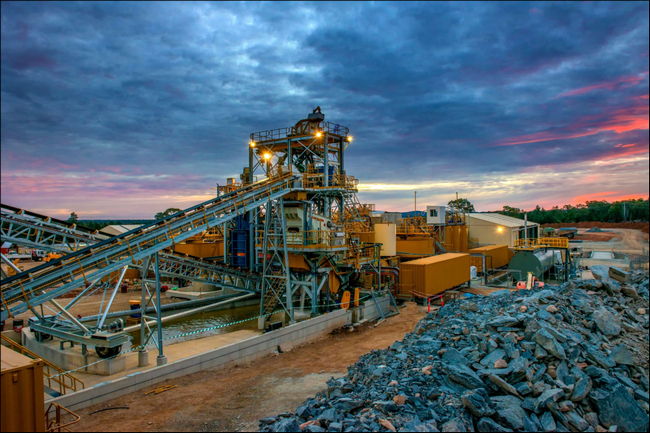~ How digital solutions can reduce downtime and improve safety in hazardous environments ~
Industries operating in hazardous areas must consider standard safety practices and ensure all equipment meets the requirements for flammable or explosive atmospheres. Effective monitoring, predictive maintenance and rapid response to failure is crucial for engineers managing these assets. Here, Marek Lukaszczyk, European and Middle East marketing manager at global motor manufacturer WEG, discusses how digitalisation can reduce risk and improve efficiency in hazardous industries.
A hazardous area is any area with an atmosphere containing, or potentially containing, gases, vapours or dust which are flammable or explosive. Industries such as oil and gas, chemical production, fuel storage and even paper production are all classed as hazardous. These areas are rigorously analysed when installing equipment to minimise the risk to individuals and assets.
It’s crucial that equipment operating in these conditions are effectively monitored to pre-empt any issues before they occur. Unlike most industries, these issues not only result in downtime but present a significant safety risk.
Monitoring matters
Condition monitoring is integral in industrial operations to avoid downtime, to implement maintenance and to reduce the risk of failure. Remote condition monitoring has previously been limited in hazardous areas due to the lack of cost-effective and easy-to-install solutions — and the often-challenging environments in which this equipment exists. For example, equipment used in subsea applications or on offshore operations cannot be monitored as frequently or easily.
Using digital solutions can offer a viable and safe way to address the challenges involved with hazardous area monitoring, minimising the need for manual inspection and intervention. WEG Motion Fleet Management (MFM) is a robust digital solution for data collection and condition monitoring of industrial assets. Using cloud computing, operators can easily access the operational status of equipment including motors and drives in any industry or location. MFM collects and processes data regularly both at the edge and in the cloud to generate important information on asset operation. Operators can use these insights to develop predictive maintenance plans and carry out condition-based maintenance.
Periodic data collection gives a more thorough overview of asset conditions, removing the need for maintenance teams to carry out observations and collect data manually. Having access to this data more frequently can allow maintenance teams to make informed decisions quickly and minimise unplanned stops. This is especially important in hazardous areas, where failure can result in loss of production. According to Kimberlite Oilfield Research, even a 1% increase in downtime can cost an oil and gas company up to $5.037 million. With a current average of 27 days of downtime on offshore platforms annually, this adds up to $38 million in financial losses, making it even more important to reduce the potential for error. Planning and carrying out repair operations may be time-consuming in hazardous areas and can require specialist resources or procedures which may not be immediately available, making effective monitoring even more advantageous.

MFM works in combination with WEG Motor Scan and WEG Drive Scan — sensors which can be installed in assets to measure their vibration, temperature and running hours and to upload this data to the cloud via the WEG Motor Scan Gateway. All sensors in the plant can be connected and the data can be accessed remotely and in real-time, and users can configure tolerances to generate alerts in case of errors.
The platform also offers increased fleet visibility remotely, allowing engineers to monitor assets from anywhere in the world. This is key in hazardous areas, for example, in offshore oil and gas operations where assets may not be easily accessible. WEG MotorScan also has Inmetro, ATEX, IECEx and MASC hazardous area certifications Ex ia I Ma, Ex ia IIC T4 Ga and Ex ia IIIC T135°C Da.
These codes refer to the level of safety when installing the product in a hazardous area, and WEG Motor Scan is classed as intrinsically safe for Category 1 environments with a continuous risk of explosion due to the presence of gas or dust. This is due to its low power requirements and thus low temperature and minimal energy of sparks, reducing the chance of an explosion.
Digitalisation is increasingly present in industrial settings and is proving to be an invaluable addition to many operations. Using digital solutions in hazardous industries can not only improve efficiency and reduce downtime and maintenance costs, but can offer significant benefits in safety and risk mitigation.
For more information on WEG’s products and services, visit the website here.
About WEG: Founded in 1961, WEG is a global electric-electronic equipment company, operating mainly in the capital goods sector with solutions in electric machines, automation and paints for several sectors, including infrastructure, steel, pulp and paper, oil and gas, mining, among many others.
WEG stands out in innovation by constantly developing solutions to meet the major trends in energy efficiency, renewable energy and electric mobility. With manufacturing units in 12 countries and present in more than 135 countries, the company has more than 33,800 employees worldwide. WEG’s net revenue reached R$ 17.47 billion in 2020, 56% from external markets. For more information, visit www.weg.net
